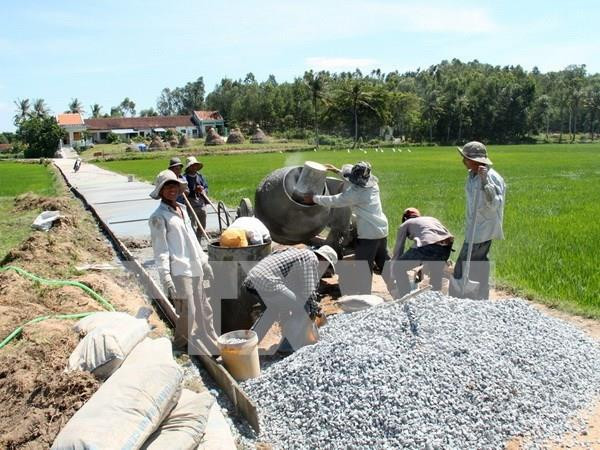Hanoi (VNA) – A total of 2,402 out of 3,474 communes in the RedRiver Delta and the north central region (69.1 percent) had met the standardsof new-style rural areas as of the end of July, according to the centralsteering office of the new-style rural area building programme.
The National Target Programme onNew-style Rural Area Building, initiated by the Government in 2010, sets 19criteria on socio-economic development, politics, and defence, aiming to boostrural regions of Vietnam.
The list of criteria includes the development ofinfrastructure, the improvement of production capacity, environmentalprotection, and the promotion of cultural values.
On average, each communein the two regions has satisfied 17.4 criteria, as compared to the nation’slevel of 15.26. To be more specific, the number of criteria satisfied by acommune in the Red River Delta averaged 18.28, while that of the north centralregion was 15.8.
Forty-one districts in the two regions have completed the new-style rural areabuilding programme, 35 of which are in the Red River Delta.
To date, 12 out of 17 cities and provinces in the regions have issued advanced criteriafor a new-style rural commune, aiming to have 88 communes meeting advancedcriteria by 2020, with 52 communes in the Red River Delta.
The central steering office said that the new-style rural building programme hasbrought about a facelift for both regions. Rural infrastructure has been improvedto meet increasing demand of local people’s production and livelihoods,particularly the network of rural roads and schools at all levels. Besides, thehealthcare system has been also improved, while many concentrated farmingmodels have been formed as part of production chains, which helps generatehigher income for local people.
Despite notable achievements, the building of new-style rural area in the tworegions still experiences formidable challenges, especially environmentalpollution caused by high population density and rapid economic development. Thefast pace of urbanisation has eroded rural cultural identity and traditionalvalues.
Thereremains a big gap among areas within the two regions, with some localities in thenorth central region lagging behind in building new-style rural areas. Theoutcomes achieved in a number of disadvantaged areas are unsustainable.-VNA






























